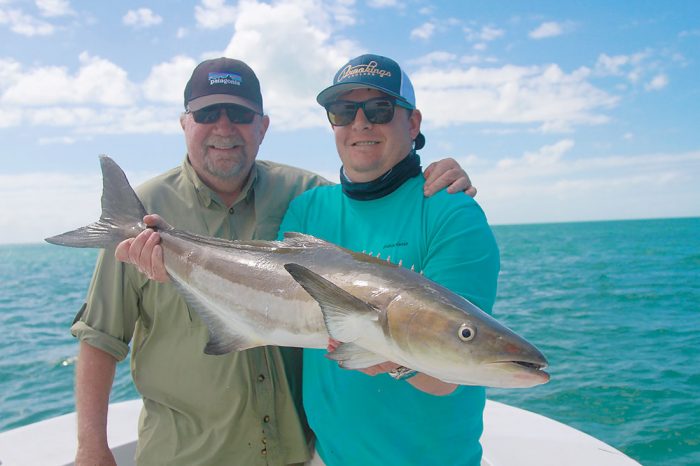February through April offers some of the most productive fishing of the year in the Florida Keys. An amazing variety of migratory fish species will travel to the Keys as cold water temperatures push them south in the Gulf of Mexico and on the east coast. The most convenient place to base a Keys fishing adventure is directly out of Marathon, which comfortably rests in the middle of this tropical island chain. Marathon encompasses a unique collection of islands, creating the ideal boating and family destination with access to both ocean and gulf waters but far enough from the crowded streets of Key West. Capt. Chris Morrison, a 20-year Keys veteran who guides out of Marathon, enjoys hooking excited anglers up with these hungry migrating species, which include record-breaking cobia, king and Spanish mackerel, trophy sailfish and several species of jacks.
Versatility is the name of the game, and options are abundant. Most often the best plan is to just decide where you want to fish, from the immense Gulf or blue ocean waters to the many reefs and wrecks surrounding the islands. Then be ready for anything when you get there. There are several techniques that work for each species, and Morrison utilizes a wide variety to keep his Temple Fork Outfitters’ Gary Loomis Inshore Series rods bending and his clients smiling.

On sunny days, Morrison likes to spot cobia with his polarized sunglasses from the tower of his SeaVee boat above the reef line or in blue water when a color change edge is present. When you see a cobia on the surface, cast the bait in front with no weight and at least 60-pound monofilament leader. A wire is usually necessary on your jigs as king, Spanish, and cero mackerel are numerous throughout these prime fishing grounds.
If you do not have a guide, the reef line on the ocean side from 25 to 40 feet is a good place to start. Anchor and hang a chum bag over the side with ground-up frozen baitfish. Chum brings the party to the back of your boat, although cobia sometimes swim with bull sharks and rays. Start drifting live shrimp back with light monofilament leader and small hooks, and you are bound to get action from one of the several species of snapper. If you start getting bit off clean, add a piece of leader wire and you will likely get hooked into a cero or king mackerel. If you decide to fish the bay or gulf side of the Keys island chain, you might want to anchor in 10 to 15 feet of water and hang that chum bag for landing Spanish mackerel. Head out to deeper Gulf waters and expect more cobia, king mackerel, and goliath and gag grouper. The wintertime fishing action in the Florida Keys will be sure to heat up your reel.
If you need an expert light-tackle fishing guide, Capt. Chris Morrison has guided anglers to more than 100 world records and received a Lifetime Achievement Award from the International Game Fishing Association. Visit www.captchris.com for more info.
John Steinhorst has contributed to many publications during the last 20 years and can be contacted at www.JohnSteinhorst.wix.com/IslandMedia.
